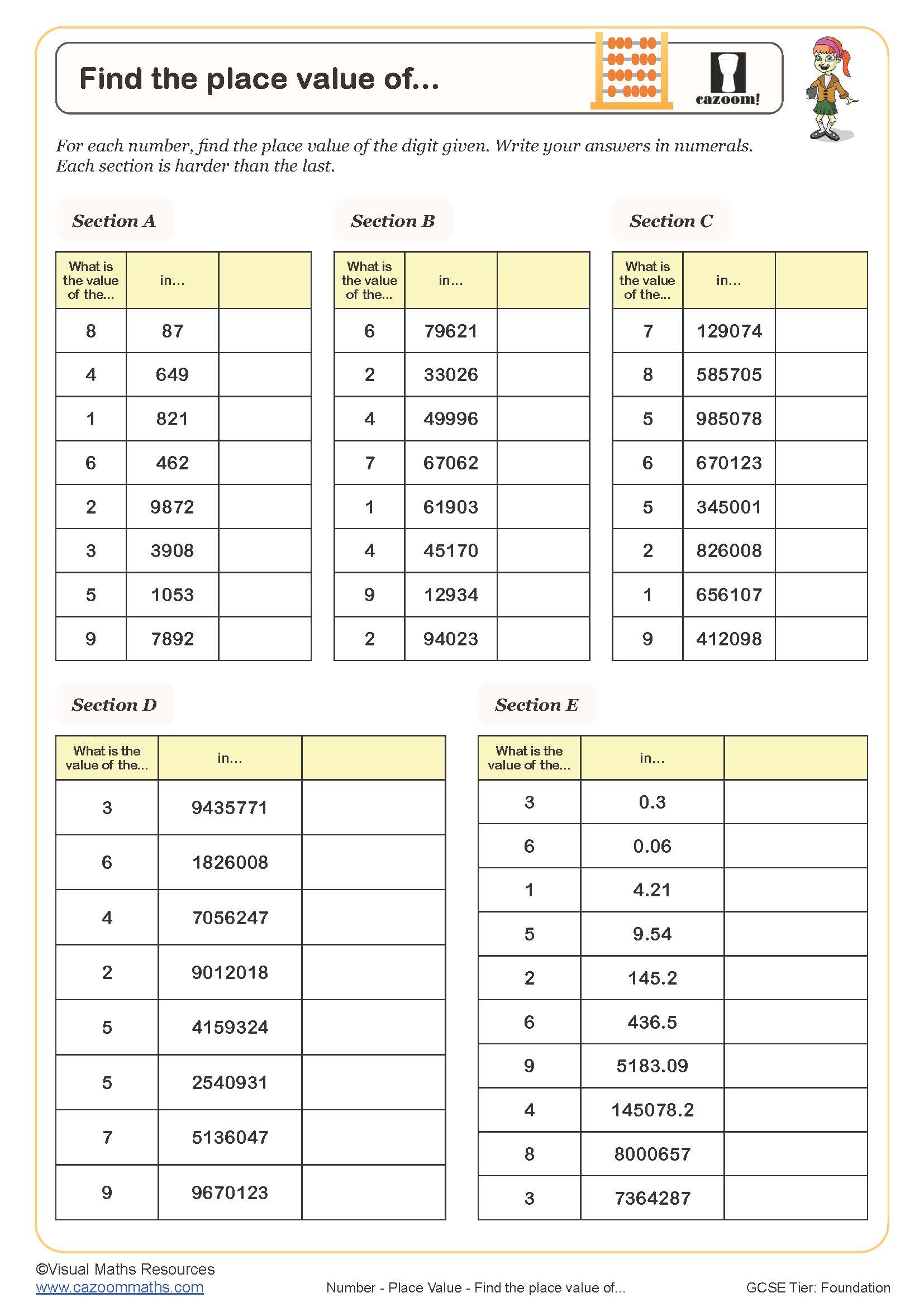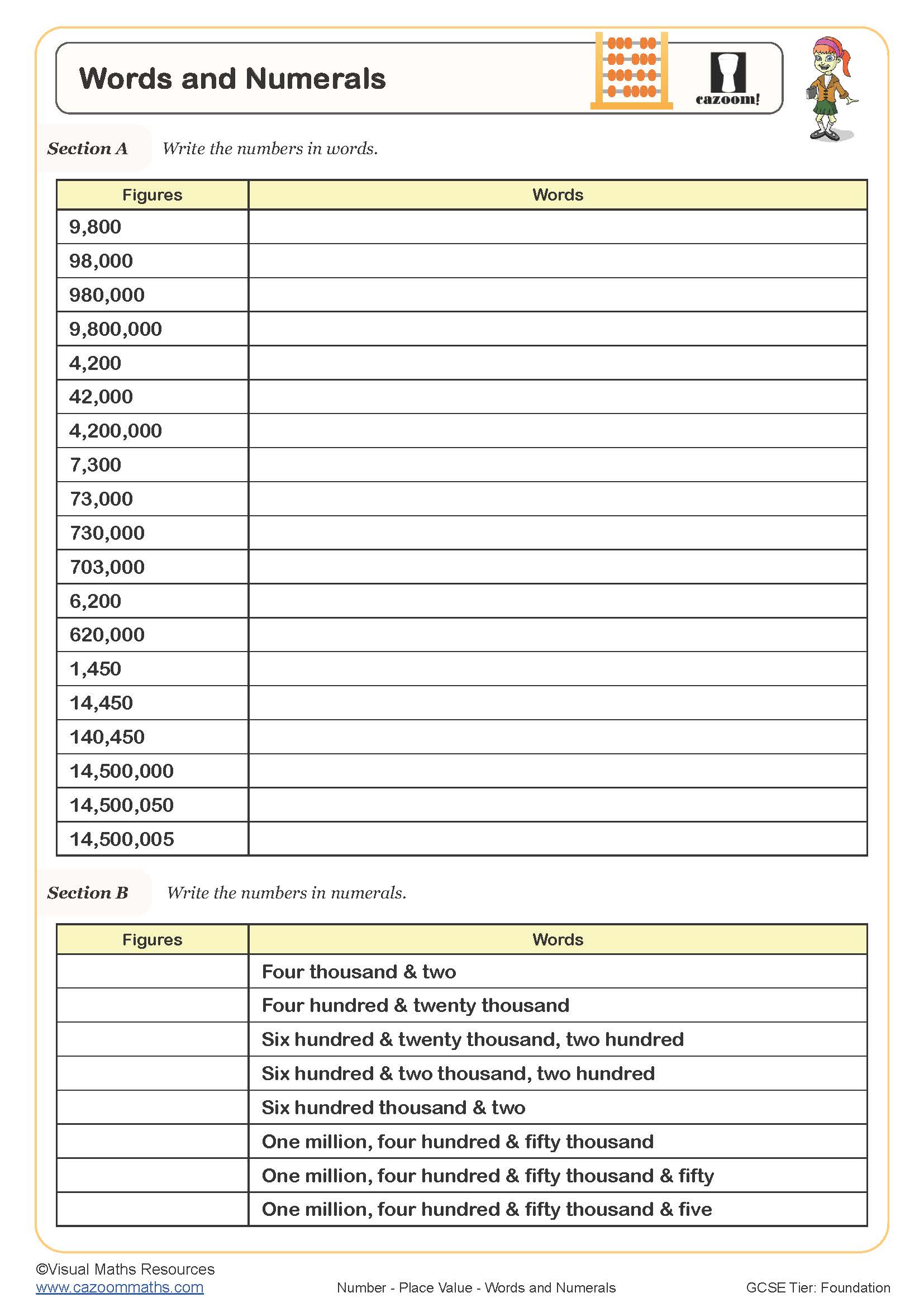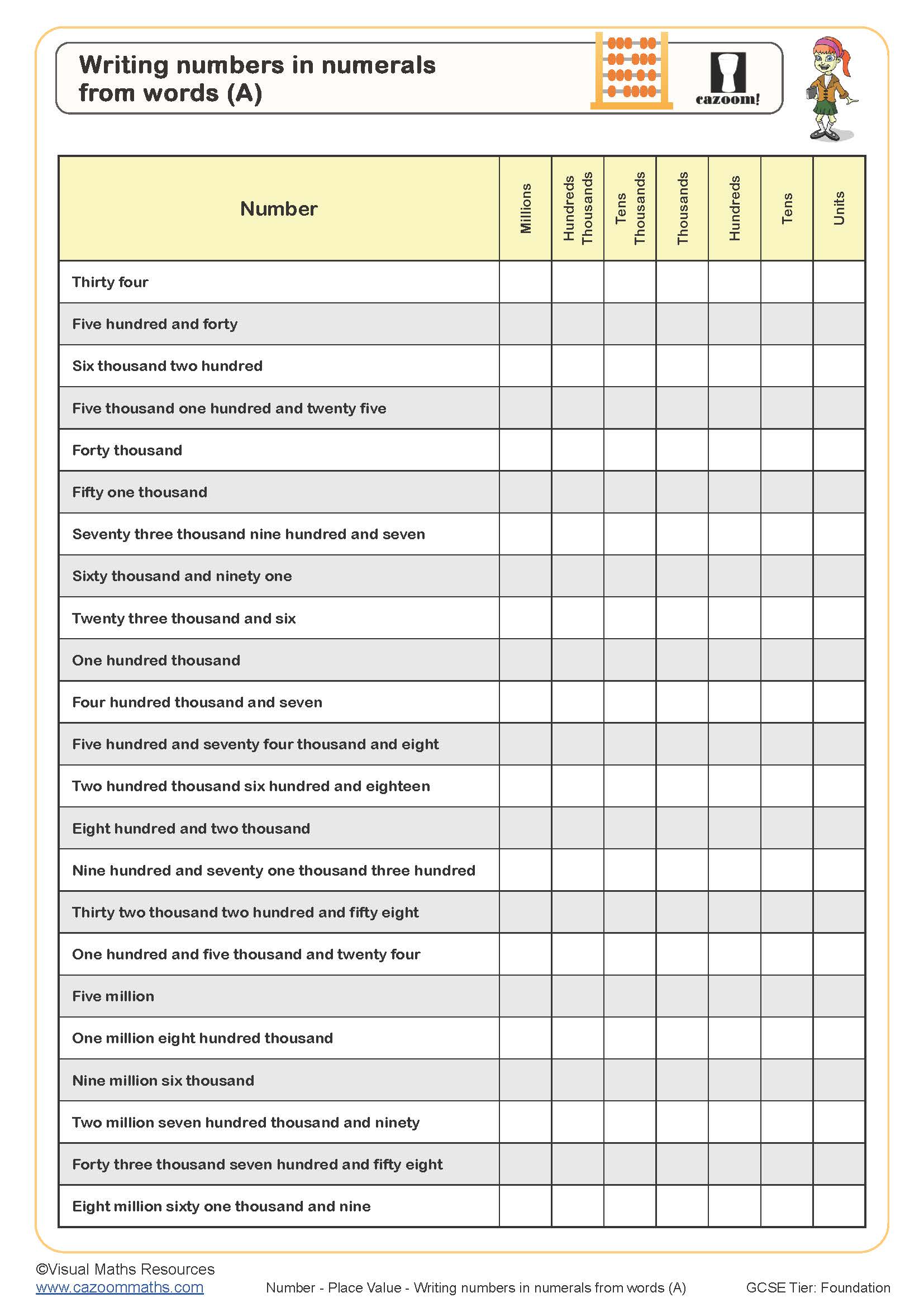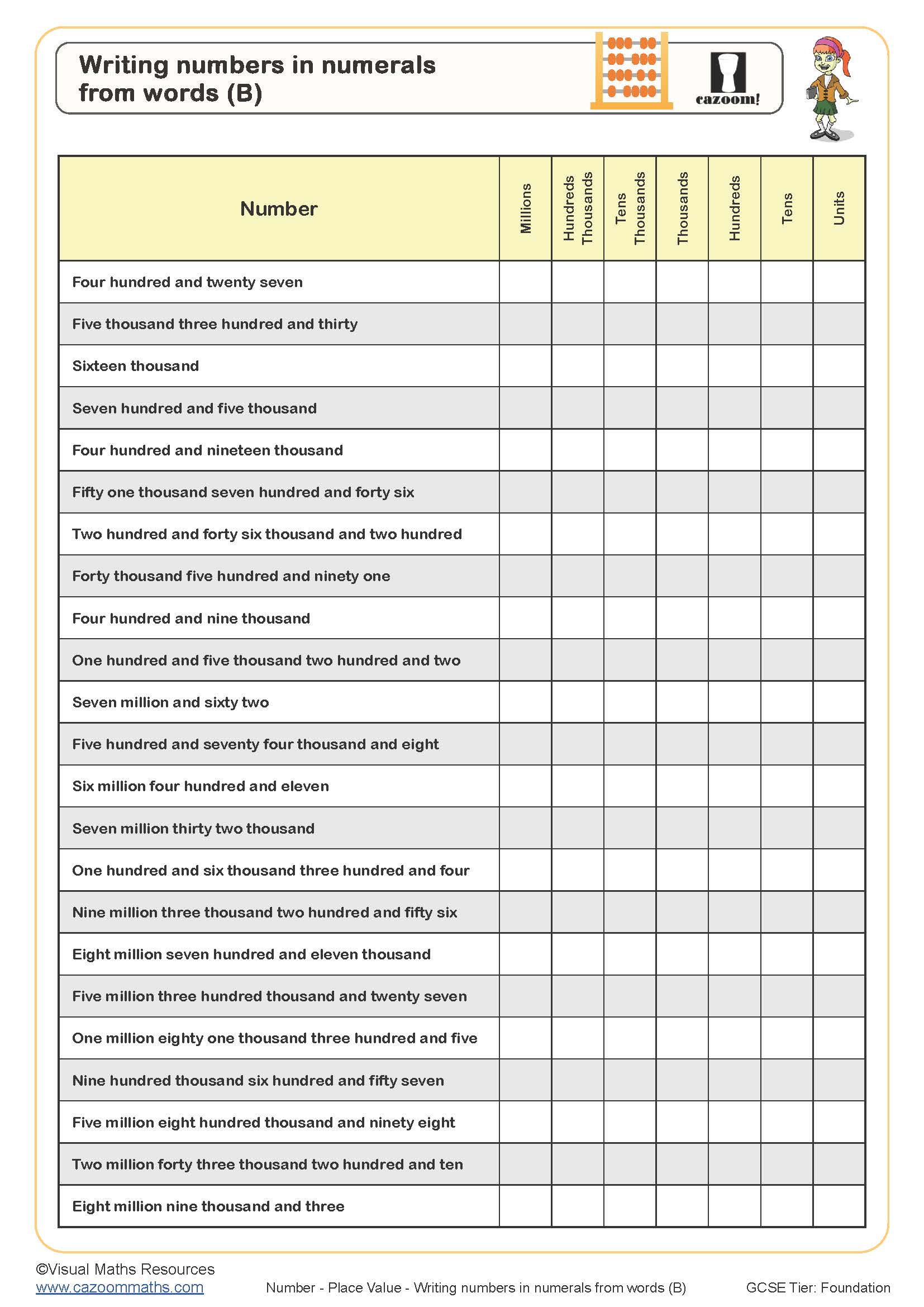Year 7 Place Value Worksheets
Place Value Worksheets PDF Downloads with Step-by-Step Solutions
Our Cazoom Maths expert team has observed that advanced number maths skills can really be overwhelming for your young students who are transitioning from KS2 to KS3. To make this learning process smooth and convenient, we have created our worksheets in ready-to-use, printable PDF format. Each of these worksheets includes separate answer sheets to facilitate an easy checking process. Download our maths activities right now to provide the extra help your young learners need!
Essential Place Value Skills Covered in These Mathematics Worksheets
Place value shows us what each digit in a number is worth based on where it sits. For example, in the number 345, the three is worth 300 because it's in the hundreds place, while the five is only worth five because it's in the ones place.
With our KS3 number resources, your secondary school students start by identifying digit values in whole numbers, then progress through decimal place value and rounding techniques. The number line activities are surprisingly popular with our classes. We've included comparing and ordering exercises too, plus some challenging problem-solving scenarios. Students particularly enjoy the real-world number contexts that make everything click into place.
Why Year 7 Students Struggle Without Proper Place Value Practice
Regular practice with these maths activities makes an enormous difference to exam confidence. The connection between understanding and performance becomes obvious quite quickly. These structured exercises help students avoid those costly mistakes that happen under pressure.
• Build confidence with large numbers and decimal values
• Reduce calculation errors in algebra and arithmetic
• Strengthen mental maths abilities across all topics
• Prepare effectively for GCSE foundation concepts
• Improve problem-solving strategies and logical thinking
Everyday Situations Where Students Apply Place Value Knowledge
These skills appear constantly in science calculations, geography data analysis, and design technology measurements. Cross-curricular connections become really obvious once students develop solid foundations. It's quite satisfying when they start spotting place value applications everywhere around them.
• Reading and interpreting statistical data in geography and science
• Working with measurements and scale factors in design projects
• Understanding financial calculations and budgeting in real life
• Analysing sports statistics and performance data accurately
• Converting between different units in science experiments
• Reading digital displays and technical specifications correctly



